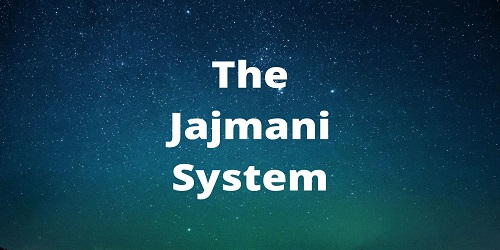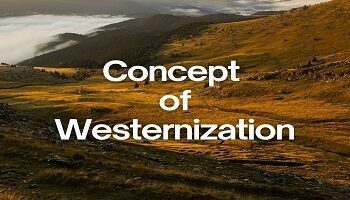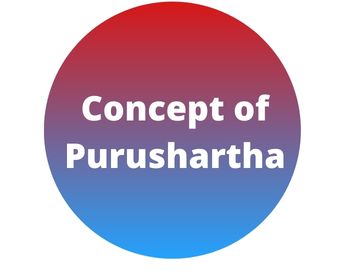Table of Contents
The Jajmani System:
The village has been a basic and important unit in the Indian social organization. One of the basic characteristics of a traditional socio-economic organization in a village is the “Jajmani System”. It is a unique social system found in multi-caste rural villages. Each caste has traditional relations to various other castes in the rendering of their special occupational services. The hereditary landlord remains at the center of such a web of social relationships with other service caste members. At harvest time, the landlord or Jajman distributes the harvested grain to several caste workers according to the service rendered to him. Every dependent service caste worker claims their dues annually only in that particular time and only in the form of payment of kind rather than payment of cash. The service caste workers include the caste-like Brahmin priest, barber, leather worker, washerman, blacksmith, carpenter, potter, drumbeater, and weaver who provides special service to Jajman in a different way. The service caste members are attached to a number of Jajman families and get their share from them. It is a type of patron-client relationship. The different caste members are linked by an economic network of interdependence. For example, the barber shaves the members of Jajman’s family, severs the umbilical cord during the birth of a child, prepares the groom at the wedding ceremony and helps the priests in the ritual ceremony of marriage, shaves the Jajman during the funeral ceremony of any of his dead consanguineal kin. In return, the barber gets his annual share of paddy during the harvest period from Jajman for rendering his occupational services. Wisler viewed that the “Jatis” is for most occupational groups and in the traditional village economy the Jajmani system largely provides the machinery for the exchange of goods and services. Kolenda defined Jajmani System as “a system of distribution in Indian villages whereby high caste land-owning families called Jajmans are provided services and products by various lower castes such as carpenters, potters, blacksmiths, and washerman.”
The Jajmani System is dwindling down gradually due to the advent of modernization and due to the development of science and technology.
Jajmani System Characteristics:
(1) The relationship between Jajman and Praja or Kamins (or pardicals or charkaws or halyas, etc.).
(2) It is a hereditary relationship in the sense that the Son inherits the occupation or duty from his father.
(3) It provides protection to hereditary occupation.
(4) By Jajmani System, the farmers were assured of the services while the pajana were secured of their livelihood.
(5) It provides relief to the Jajmans as well as the Kamins, it gives them peace and contentment, and there is a feeling of security in the society.
Jajmani System Merits:
(1) Job-Security- It is hereditary and thus son inherits his clients as well as employment from his father. The reward for the services is also fixed and certain. Thus the son of a Kamin does not face job uncertainty since they receive employment as their birthright.
(2) Economic Security- Kamins are very well paid by the Jajmans and they look after their welfare with no less interest. In the event of monetary crises, the Jajmans help the Kamins, so there is economic security in the Jamani System.
(3) There is a close personal relationship between Jajman and Kamins.
Demerits and Causes of Disintegration of the Jajmani System:
(1) Source of Exploitation- With the changes in the structure of rural life, the Jajmani System, like the caste system has become a source of suppression, exploitation, and discrimination. The study conducted by Oscar Lewis, in Rampur village, revealed that the Jajmani system has become an instrument of exploitation in the hands of Jajman.
(2) Jajmani System Spreads the Feeling of Superiority Among the Jjamans- In Jajmani System the Kamins are looked down upon with contempt by the Jajman. Kameen itself means the lowly, inferior, or sub-standard and even nuisance. The Jajmani system thus helps in perpetuating the distinctions between different sections of society. Suppression of the Kamins is supplanted by mistreatment. Sociological surveys have revealed that Jajmani System perpetuates the exploitation of subject castes by the upper castes.
(3) Jajmani System is Supported by Caste System- Caste System is the basis of the Jajmani System. With the disintegration of the caste system, Jajmani System is also disintegrating day by day. Class struggle and groupism have taken the place of the caste system, this has very much aided the decay of the Jajmani System. With the changes in religious structure, the Brahmins are in less demand now.
(4) Effects of Transport and Communication- Now the Kamins are no longer compelled to do the job of Jajmans, but with the availability of transport and communication, the villages are shifting to the urban areas to seek better employment and in a similar way Jajmans are at many advantages to receive better services from the urban areas. Effects of Westernization and education have rendered the Jajmani System outdated. Now the professions are no longer confined to a particular job and villagers belonging to different cases are engaged in agriculture.
(5) Social Reform Movements- Various religious reform movements like Arya Samaj have produced one of the greatest setbacks to the Jamnai System. Reformers have taught the suppressed castes to rise up and shun exploitation.
Thus the Jajmani System, one of the foremost characteristics of rural life, is disintegrating day by day. The social change as well as the adaption of Western ideologies by the village youth have produced blowing setbacks to the Jajmani System.









Comments (No)